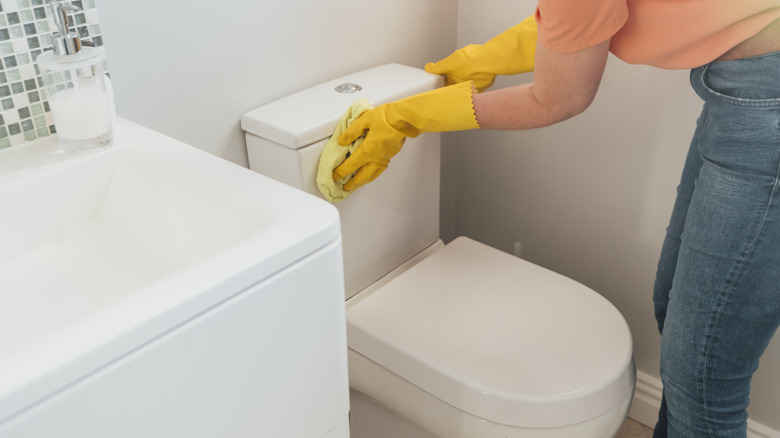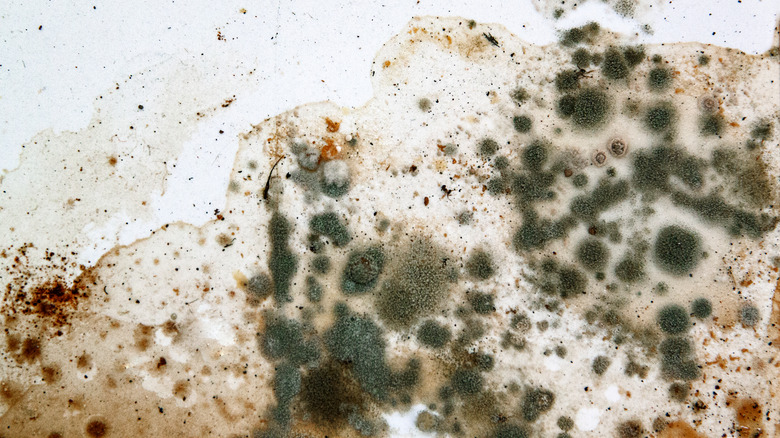What Does It Mean If Your Toilet Is Sweating And Why Is It Bad?
If you have quite a bit of humidity in your house, you may notice that the air feels thick and uncomfortable. You may notice it in other ways, too, such as a sweaty toilet. This means that condensation is forming on the outside of the tank, which is the upper section that holds water. Condensation sometimes happens on the bowl too, but this is less common.
You may only notice minor dampness on the exterior of the tank, or in cases of extreme humidity in the air, it may show up as noticeable beads of water running down the exterior of both the tank and bowl. Fortunately, this moisture is only a sign of humidity in the air, rather than a sign that your toilet is too old. As this water collects and drips downward, you may see it collecting around the base of the toilet. Over time, this water could create damage to the flooring or any nearby drywall, which could lead to premature rotting. You also may end up with mold formation in your home that you need to get rid of to keep your family safe.
So why does the toilet sweat? Each time you flush, the tank refills with water. This fill water is cold, as it comes directly from your water supply. With the water temperature inside the tank lower than the surrounding air, condensation from the humid air forms on the outside of the tank, looking like sweat.
Is there a way to fix a sweating toilet?
Thanks to frequent showering and hot water use and often poor ventilation, bathrooms often have a higher humidity level than other areas of the home. As such, fixing a sweaty toilet can be a challenge — but definitely doable.
Start by trying to reduce the humidity in the bathroom. You may want to install a dehumidifier in the area, which helps to pull moisture out of the air. This works especially well in the summertime, when the atmosphere naturally has more humidity. You could also install a ventilation fan that encourages air movement and leave the door open when someone is taking a shower to allow moisture to spread throughout the house. During humid days, make sure you're running an air conditioner that serves the entire home, as this reduces moisture in the air. Look at the air conditioner vents inside the bathroom and move any items or furniture that are blocking them. If you don't have air conditioning, open windows whenever someone is taking a shower to allow airflow through the area.
You also can make changes to the toilet itself to cut down on the formation of condensation. Add an insulation liner to the interior or exterior of the toilet tank, which will reduce the temperature variation between the cold water in the tank, the tank's exterior material, and the air in the bathroom.
Understanding the dangers
Unfortunately, if you have significant sweating on your toilet, the damage that could occur over time is similar to what could happen with a slow leak. The water that collects at the base of the bowl accumulates, meaning the flooring in the area could warp. Odors could form, and you could end up with structural damage to the floor under the toilet. If it weakens enough, the appliance could potentially loosen or fall through the floor. If this damaged bathroom flooring is above another floor of your home, you may even see damage to the ceiling on the lower floor directly underneath the spot where the moisture is collecting.
Much like with a leak, the water from condensation on the tank continues to drip down, so the area never really dries out — without taking the proper steps, the problem will only grow. Eventually, you may see black mold appearing near the base of the toilet, as this type of mold especially thrives in consistently damp environments. Black mold is a health hazard, as it can cause coughing, sneezing, and eye irritation. If you have asthma, black mold can worsen your symptoms.
If the sweating toilet is near an exterior wall, you could end up with drywall damage from the excess water. Moisture-damaged drywall can have staining, can cause paint to peel, can allow mold to form, and can cause a loss of structural integrity in the material.

